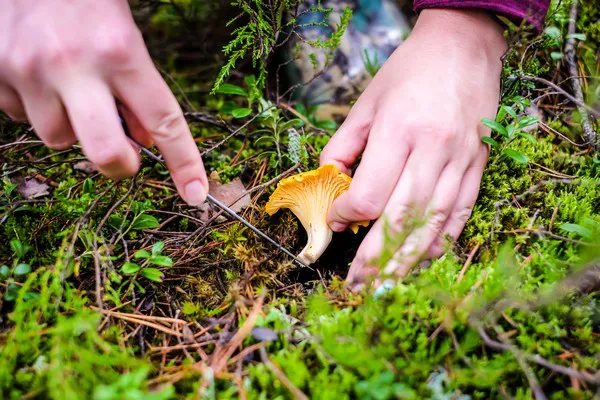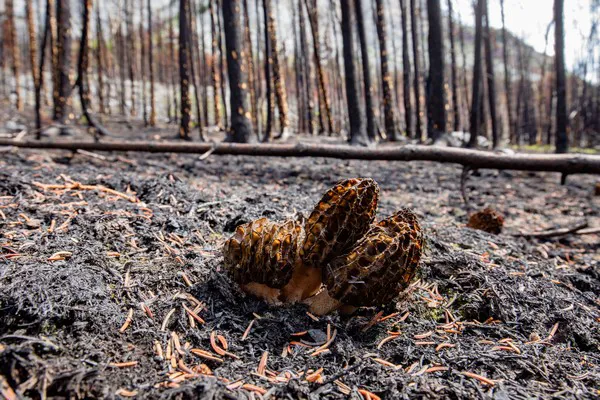Wild mushroom varieties like Chanterelle, Morel, Lobster mushrooms and Pine mushrooms grow in remote areas of North America. “We see them in forests, on mountains, and in valleys that often don’t have road access,” says Joe Salvo with Ponderosa Mushrooms in British Columbia, Canada. Wild mushrooms that grow in Washington, Oregon and Northern California are often relatively easily accessible, but it’s a whole different deal in the wilderness of British Columbia, Alaska, and Yukon.
Although Salvo likes to pick wild mushrooms himself, it is a very time-consuming job. Therefore, he works with field agents who buy the mushrooms on his behalf. These field agents arrange for their pickers to go out into forests and mountains to find the mushrooms. “Some days, we have as many as 20 field agents, and they might each have a few dozen people picking for them.” This means several hundred people could be hunting for wild mushrooms on a given day. Mushroom pickers work across the west coast and Ponderosa Mushrooms arranges for the transportation from the different growing regions to their facilities in British Columbia.
 Chanterelle mushroom in the forest. Source: Dreamstime.
Chanterelle mushroom in the forest. Source: Dreamstime.
Hardly any Fall supplies
The Fall, from September through December, is typically the peak time of year to harvest wild mushrooms like the Pine mushroom, White Chanterelle, Yellowfoot Chanterelle, and Lobster mushroom. “Demand is high that time of year, both domestically and abroad. However, this season, supplies were pretty much non-existent. It was a very strange season that saw extremely cold weather, extremely high temperatures and excessive rainfall,” Salvo said. Regions that are usually very reliable in terms of supplies, produced next to nothing this season. “I haven’t seen this happening before, at least not to this extent,” he commented.
What reduced supplies even further are high fuel prices. “Usually, pickers go exploring and check out this mountain or that valley. However, with the high fuel prices and knowing supplies are limited to begin with, some pickers don’t even bother to go.” As a result, demand exceeded supplies and prices reached levels of $30 and more per kilogram. Normally, Salvo would export plenty of wild mushrooms to Europe this time of year. Instead, he is now importing Hedgehog mushrooms and Yellowfoot Chanterelles from Portugal.
 Morel mushrooms. Source: Dreamstime.
Morel mushrooms. Source: Dreamstime.
Good season for Morels expected
Supplies of wild mushrooms will hopefully pick up again in spring. April, May, and June are the peak months for Morel mushrooms. This variety grows off forest fires and the main harvest of Morels takes place the year following a forest fire. Fires sterilize the ground and Morel mushrooms are the first to grow out the following spring. “We had quite some wildfires last year, so there should be Morel mushrooms available this spring,” said Salvo.
In very remote areas that don’t have road access, helicopters or float planes are used to scout for the unique variety. “We put up a remote picking camp that is only accessible by air.” However, during times of abundant supplies in easily accessible areas, there is no need to invest in costly scouting trips. It’s too early to tell where this year’s supplies will be located.
 For more information:
For more information:
Joe Salvo
Ponderosa Mushrooms
Tel: (+1) 604-945-9700
[email protected]
www.ponderosa-mushrooms.com
